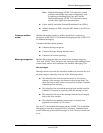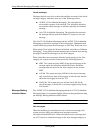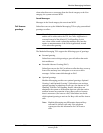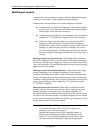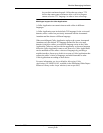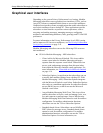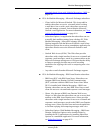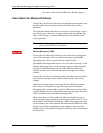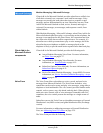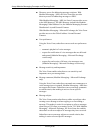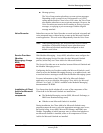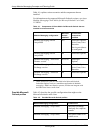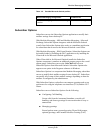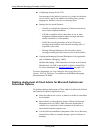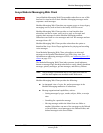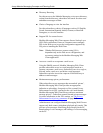
Modular Messaging interfaces
November 2004
Avaya Modular Messaging Concepts and
Planning Guide
4-17
Modular Messaging—Microsoft Exchange
Client Add-in for Microsoft Outlook provides subscribers a unified view
of all their voicemail, text, corporate e-mail, and fax messages. Voice
messages are stored in the same inbox that receives corporate e-mail
messages, and are differentiated by an icon. Subscribers can use Client
Add-in for Microsoft Outlook to send, review, forward, and reply to
voicemail, fax messages, text messages, and corporate e-mails, from
within Outlook.
With Modular Messaging—Microsoft Exchange, when Client Add-in for
Microsoft Outlook subscribers play a voice message on the telephone, the
message is not transferred to the client. Hence, the connection rate from
the client to the MAS does not affect responsiveness. For example, if a
subscriber uses a dial-up connection to play a voice message, and if the
subscriber has two telephones available, a message played on the
telephone is likely to provide much better responsiveness than local play.
Client Add-in for
Microsoft Outlook
components
Client Add-in for Microsoft Outlook provides the following tools:
! Avaya Modular Messaging Voice Form. For more information,
see Voice Form
on page 4-17.
! Avaya Modular Messaging Voice Recorder. For more
information, see Voice Recorder
on page 4-19.
! Subscriber Options (Voice Mail tab). For more information, see
Subscriber Options
on page 4-21.
! Service Providers (Modular Messaging—Avaya MSS). For more
information, see Service Providers (Modular Messaging—Avaya
MSS) on page 4-19.
Voice Form The Voice Form allows subscribers to review, record, and send voice
messages from Microsoft Outlook. The Voice Form includes a voice
control that can be used to create and play voice messages, using either a
telephone or local multimedia. The voice control provides familiar audio
controls, such as, pause, stop, skip ahead, and skip back. When playing
multi-part voice content, such as voice messages forwarded with voice
comments, the voice control presents the message as a single stream of
audio.
Subscribers can use the Voice Form to also address messages to Personal
Distribution Lists (MSS version) and global distribution lists (Exchange
version).
For more information on addressing messages to Personal Distribution
Lists, see Addressing from GUI clients
on page 5-39.
The Voice Form provides the following features:



